| Columns Retired Columns & Blogs |
Oppo Ear-Pads Listening and Measurements
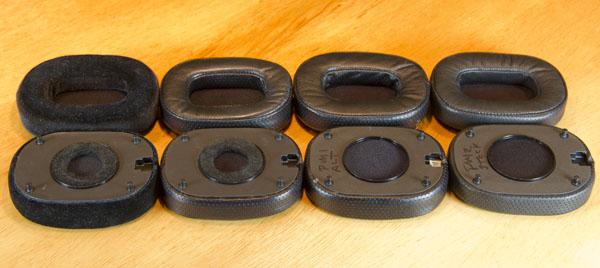
This story originally appeared at InnerFidelity.com
It's super-duper when headphone manufacturers include the community when developing products...for the enthusiasts. It makes for great entertainment and developing interest among the headphone faithful. But, whooo boy, what a chore for the manufacturer. Herding cats is an understatement.
Many others noted as I did in my Oppo PM-1 review that the headphones were somewhat overly polite. It's a sound I tend to like, but a coloration none the less.
So, with the lower cost PM-2 model about to be released, the folks at Oppo decided to go back to the drawing board to see if things might be tweaked a bit. The result was a slightly brighter pad design, both for the PM-2 and an alternate leather pad for the PM-1. Here's a quick look at the pads.
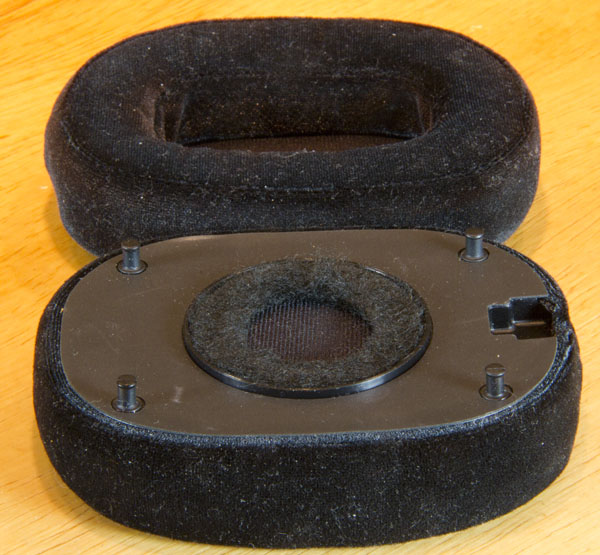
Original Velour pads for the PM-1.
Of the two pads that originally came with the PM-1, I preferred the Velour pads. To my ears they seemed to have a bit more meaty bass and a tad more treble.
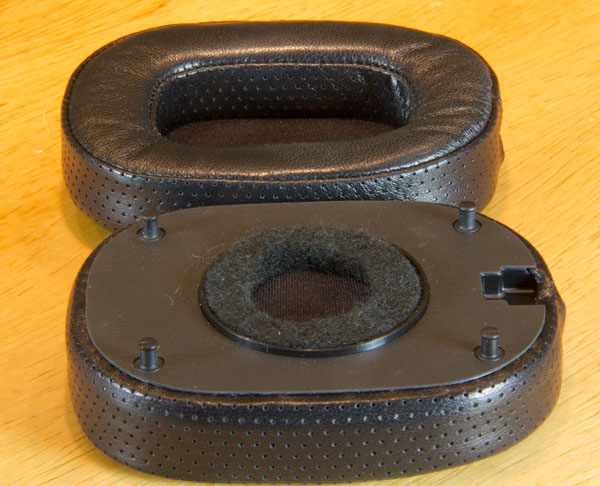
Original leather pads for the PM-1.
The leather pads were quite close to the velours, but they seemed more polite...a direction that these cans really don't need to delve into further. Notice these pads have holes on the inside of the pad all the way around. These hole provide a controlled leakage that tends to even bass response—they lessen the bass hump and changes to bass response with changing seal of the pad. Unfortunately they also lessen bass response overall by a small amount. The velour pads don't need the holes because the fabric naturally leaks. Notice that both the stock leather and velour pads have a small donut of felt behind the pad to damp the cavity resonance in front of the driver.
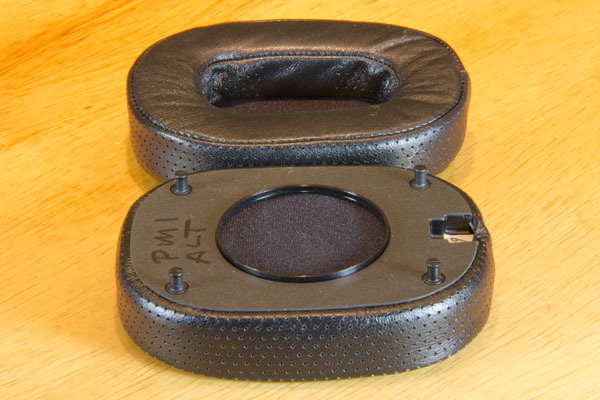
New Alternate Leather PM-1 Pad.
Here's the new alternate leather pad for the PM-1. These pads now come with the PM-1, which still includes both original pads...yes, buy the PM-1 now and you now get all three pad types. Owners of the PM-1 who purchased prior to these pads becoming available can request a free pair of the pads here.
To my ears these pads are superior to both original pads, delivering a bit more low-treble energy and giving vocals a bit more presence. Even though I'm fine with a bit of "veil" I do prefer these pads to the original ones.
Notice these pads do not have the felt donut on the rear, and there is a section of the inside of the pad that doesn't have any holes in it. This brings the bass up just a tad from the original leather pads.
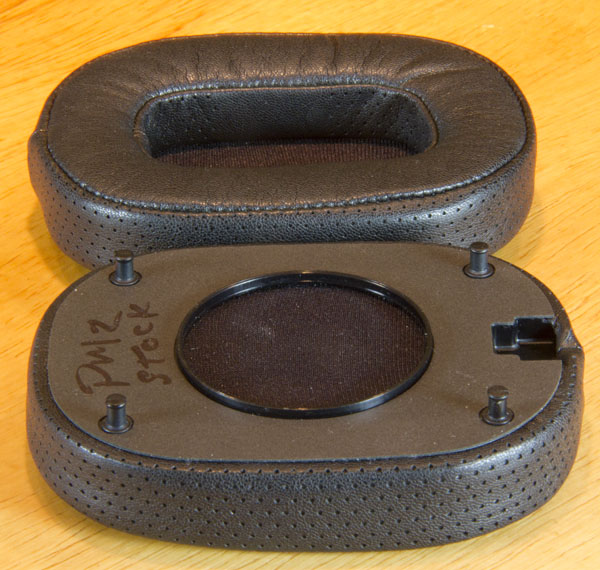
Stock PM-2 protein leather pads.
The PM-2 is a lower cost version of the PM-1 and is very much the same except for differences in materials used and accessories included with the purchase. A complete rundown of the differences between the two models can be seen here.
The PM-2 pad uses the same design as the PM-1 alternate pad except for using less costly materials. Note that it too has the same inside hole pattern as the PM-1 Alt pad.
Generally, I found this to have a similar sound character as the Alt pad but a tad brighter, and bit less refined sounding. Of course, that could just be me knowing the materials are less costly and projecting, but measurements bear out the observation. I'll dig into this a bit more as I listen to the PM-2 and consider it for review. (Which is quite likely.)
All these pads are close enough in character to be quite similar, but different enough to warrant a good hard look. So I did a bunch of measurements. The following graph shows the averaged raw frequency response of the Oppo PM-2 measured with all four pads. Plots are aligned at 400Hz.
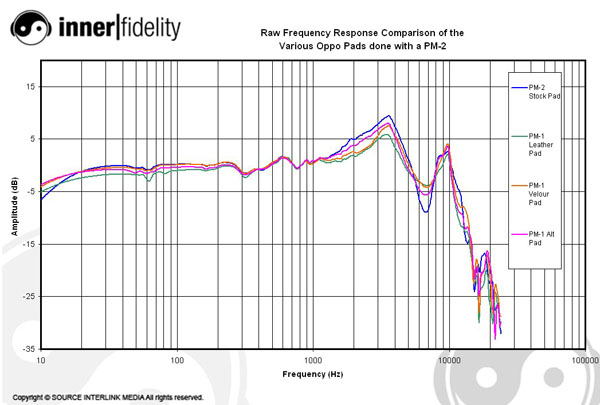
Averaged raw frequency response plots of PM-2 with the four available pads.
For me the most important part of this plot is in the region between 1kHz and 3.5kHz. This low-treble area give presence to vocals. When lacking it results in a veiled sound, giving the impression of more distance between the voice and listener...at least that's how I hear it. You can see that the PM-1 Alt and PM-2 pads do a much better job of providing a linear rise to the peak at 3.5kHz. The Harman response curve would actually see the starting point of this rise even lower in frequency—imagine connecting the 600Hz peak to the peak at 3.5kHz. While the PM-2 pad might actually be more neutral in the area between 1-3.5kHz (sorry, not sure), the subsequent more severe dip at 7kHz is troubling. Ideally, the area between 3.5kHz and 10kHz should not have a valley at all.
I'll go into more detailed listening notes on the two new pads when I do the PM-2 review, but for now I will suggest to those who own the PM-1 it's a very good idea to take Oppo up on their very generous offer for free PM-1 Alternate pads.
- Log in or register to post comments




































